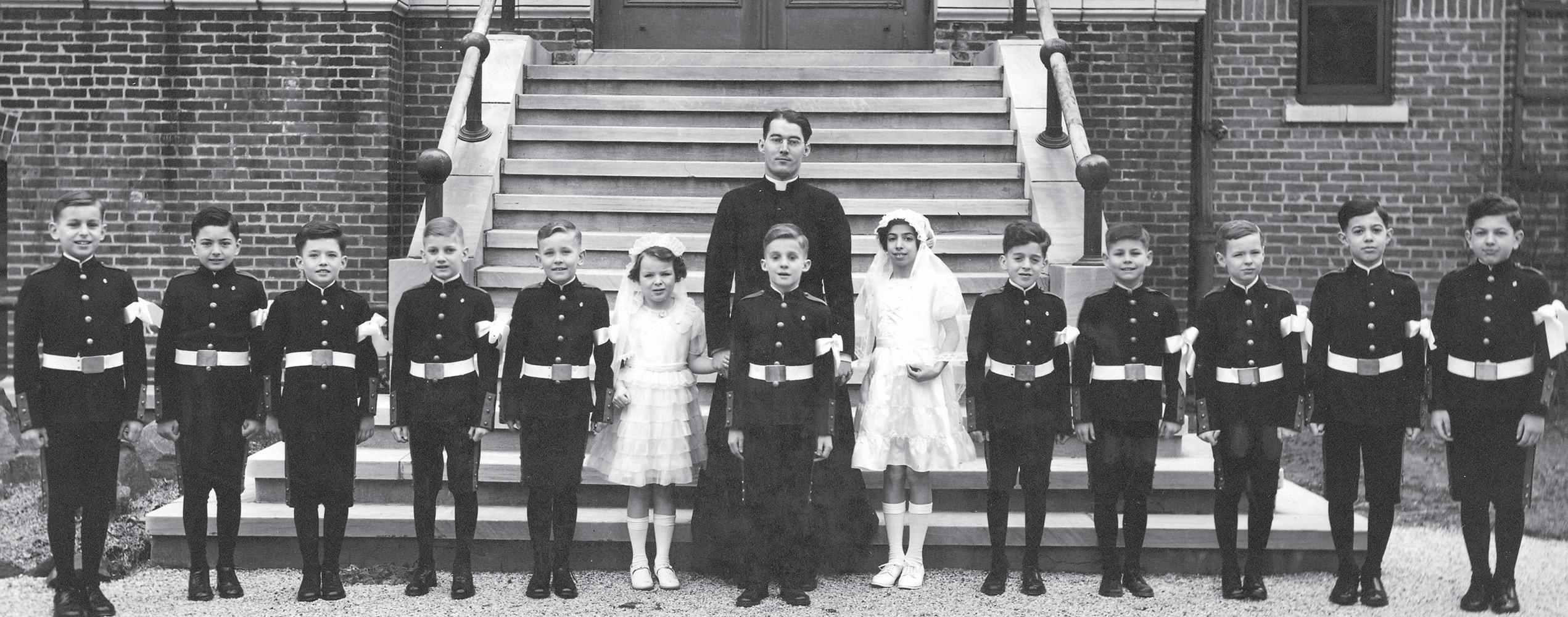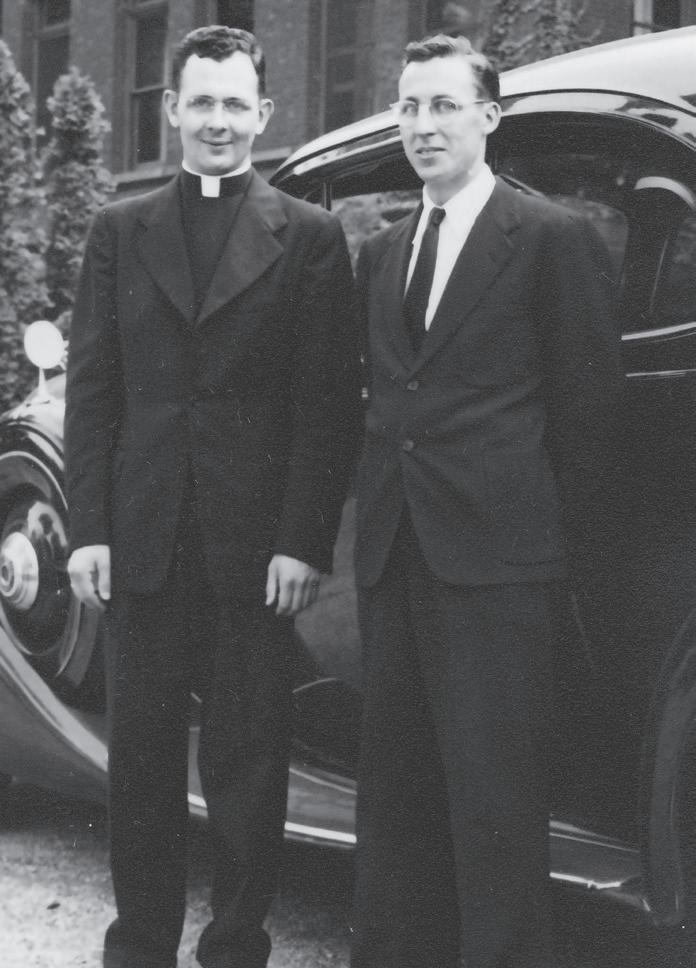
2 minute read
In Memoriam
Fr. John Lane with First Communion Class, St. Joseph School for the Deaf, 1944
director of the school, Hanna Miller, wrote to him in November 1943 emphatically rejecting Fr. Daniel Higgins, CSSR, as a presenter for a staff workshop. “In his sermons and talks he uses signs exclusively – never utters a word . . . and his facial expressions are to the extreme.” Fr. Higgins, a well-known advocate of using sign language to advance religious education among deaf people, defended his stance in his own letter to Fr. French. “I have spoken and signed or signed to the children in almost all state schools west of the New England and East Coast states, but there are now three Catholic schools for the deaf in which no one is allowed to use the Signs for religious instruction, although the children can be taught evil by their school mates and by others young and old by means of Sign Language.” The Viatorians also found that it was not so easy to teach deaf students without proper training. Fr. Francis T. Williams, who led the Viatorian group at St. Joseph, stated in a July 1945 letter to Fr. French that “We pioneers have put in two of the toughest years that we never want
Advertisement
to experience again.” He emphasized to Fr. French the importance of training future Viatorians coming to St. Joseph in sign language and methods for teaching deaf students. Fr. French had been weighing an offer from the Society of the Daughters of the Heart of Mary to purchase the school, and Williams’ letters seem to have been the deciding factor. After consulting the Provincial Council, Fr. French declined the Sisters’ offer, stating that “there are clashes of policies and too many problems to be straightened out.” Despite this, the Viatorians stayed on for nearly three more years. In early 1948, the Sisters asked to terminate the Viatorians’ contract at the end of the academic year, citing decreased enrollment. While the Viatorians’ ministry at St. Joseph School for the Deaf did not turn into an expanded ministry to the deaf, it left its mark on the Viatorians who taught there. In an article for the Viatorians’ newsletter, The Lector, published in February 1945, Fr. John Lane emphasized that deaf children are not intellectually disabled and stated that the goal of educating a deaf student is to enable him “to create a useful place for himself in the world, to become a useful, self-reliant and self-supporting citizen.” Fr. Williams, who left the school in 1946, went on to write his PhD thesis on scientific methods of teaching deaf students. In the end, time would bear out the wisdom of the Viatorians’ belief in Pagé’s and Higgins’s methods; signing has come to be recognized as an integral part of Deaf culture and a preferred method of communication. Even though their ministry to the deaf lasted only five Fr. Patrick Hayes (left) and Brother Michael J. (Joe) years, the Viatorians at St. Joseph School for the Deaf carried out O’Brien (right), two of the Viatorians who served at St. Joseph School for the Deaf, 1945. their mission to embrace those “accounted of little importance,” and withdrew from the field when they realized they could not do the work to the highest standards.











